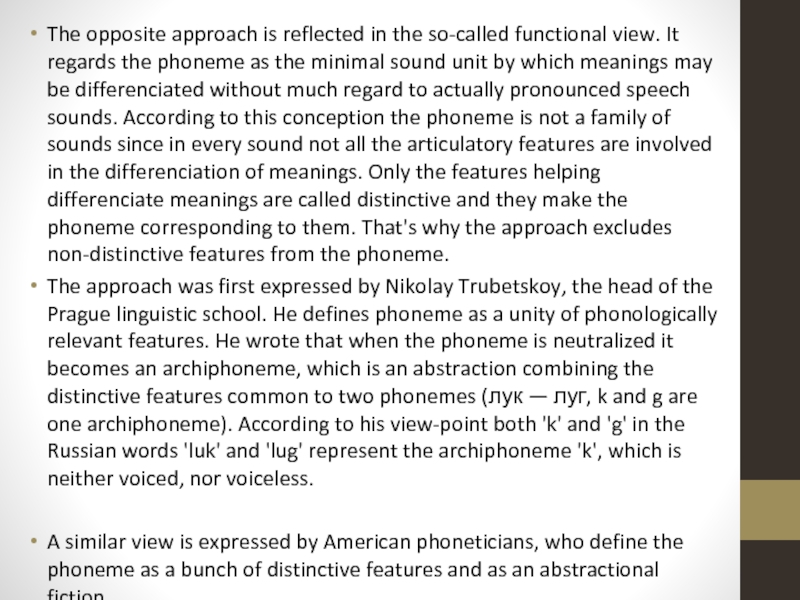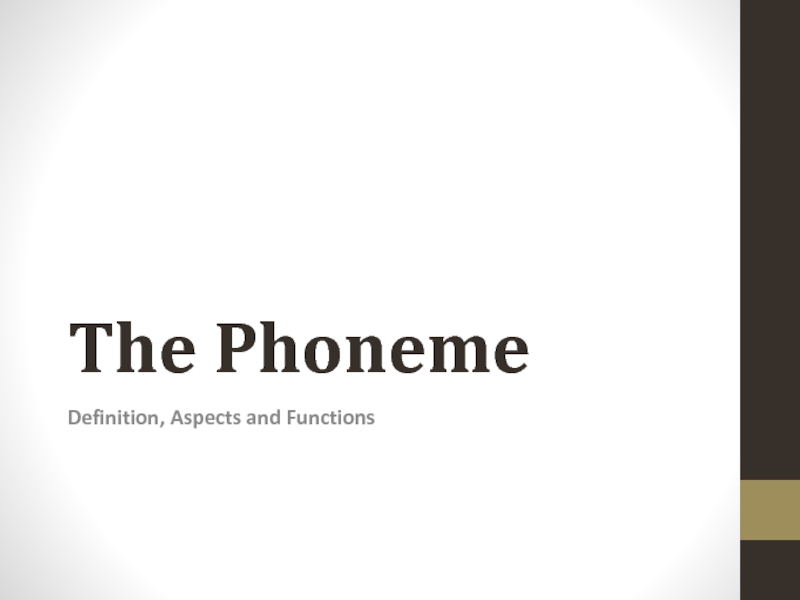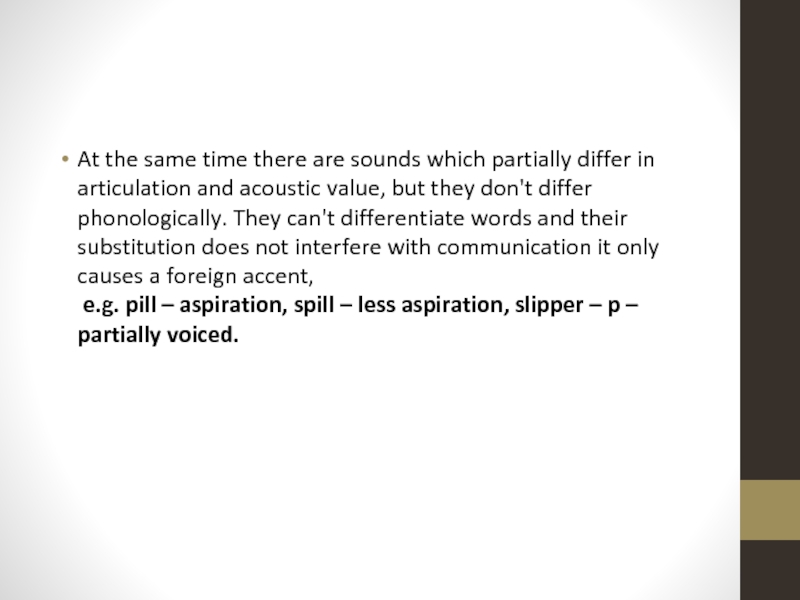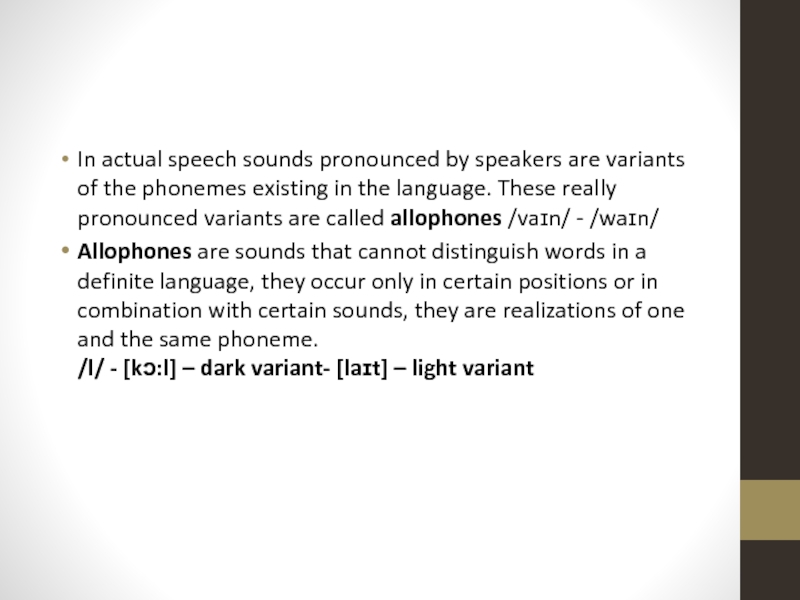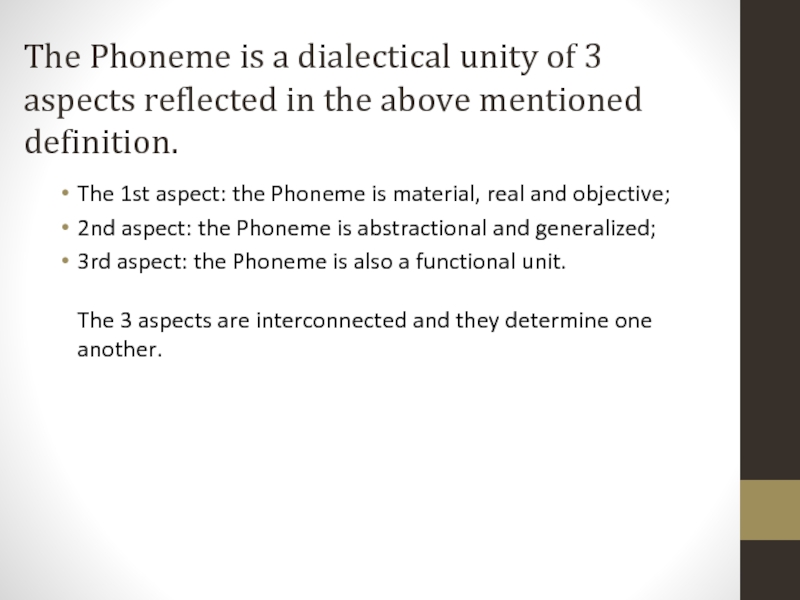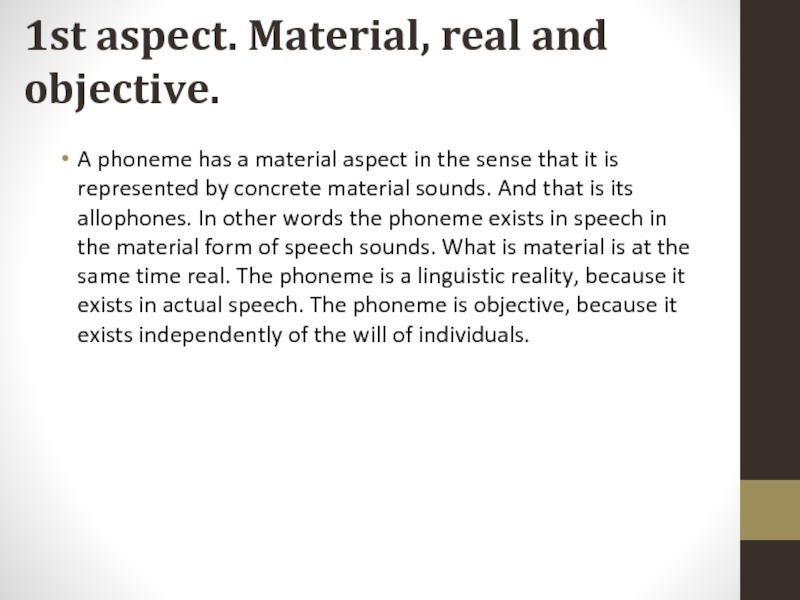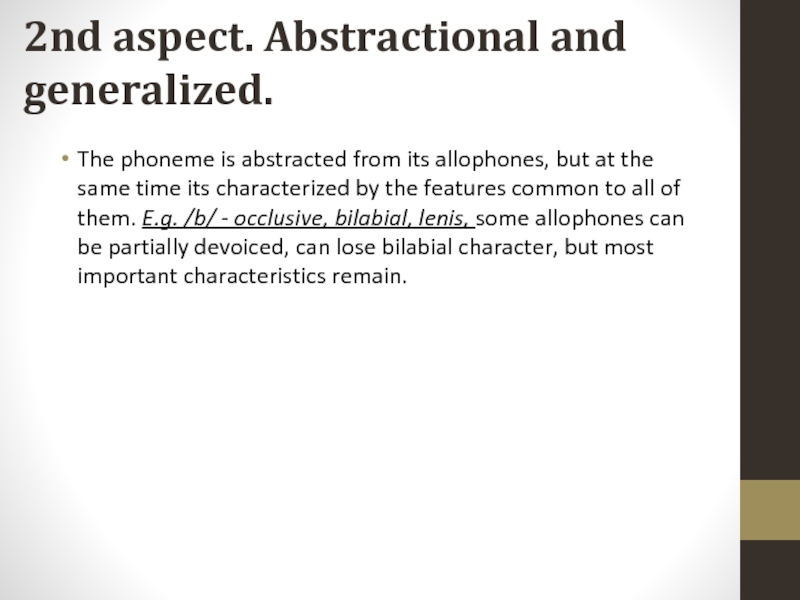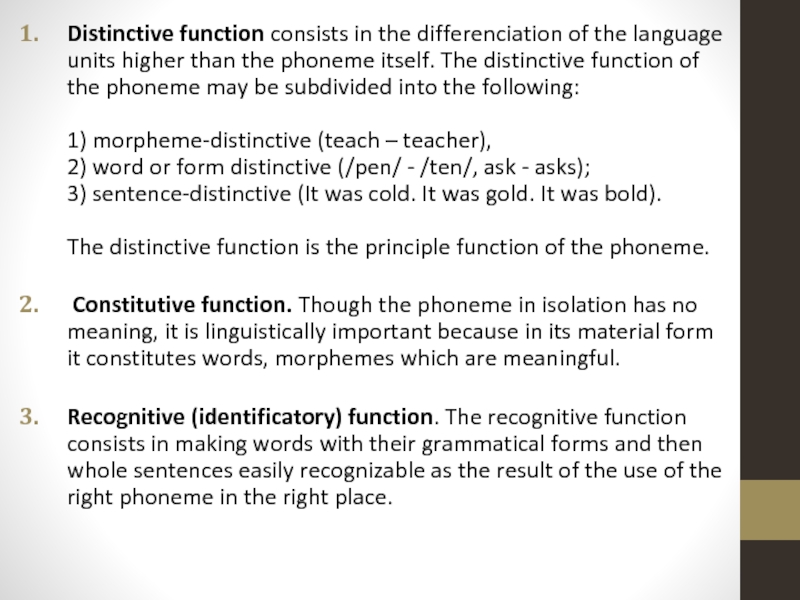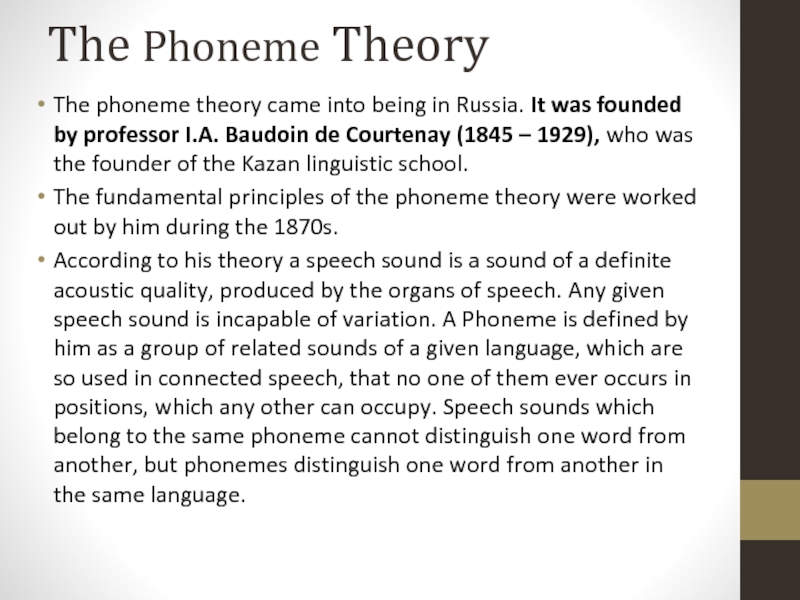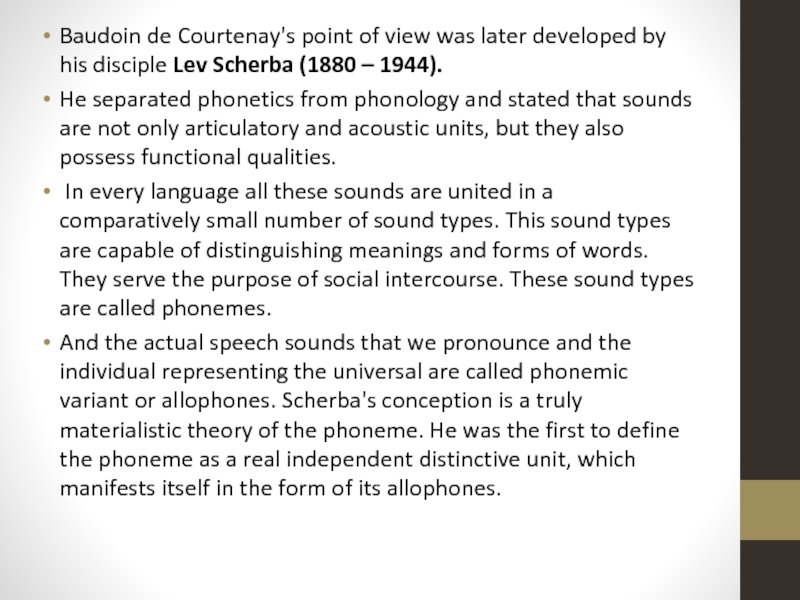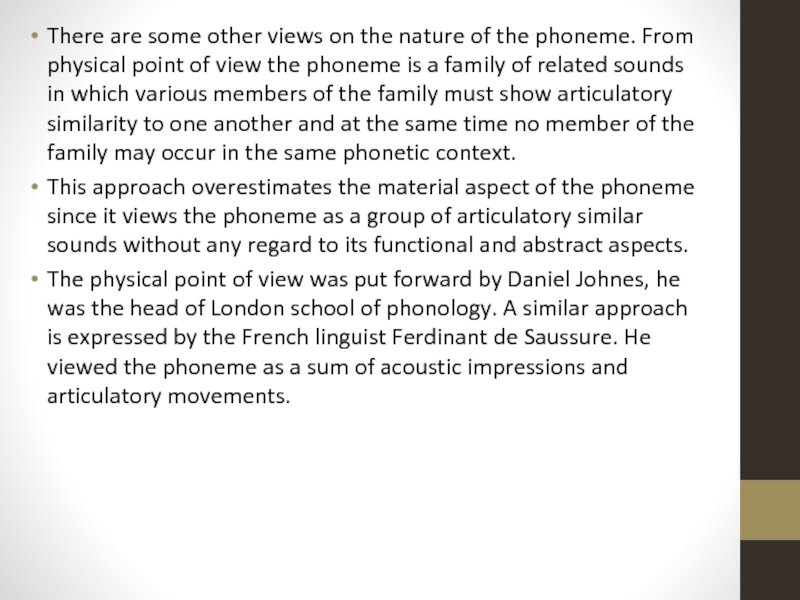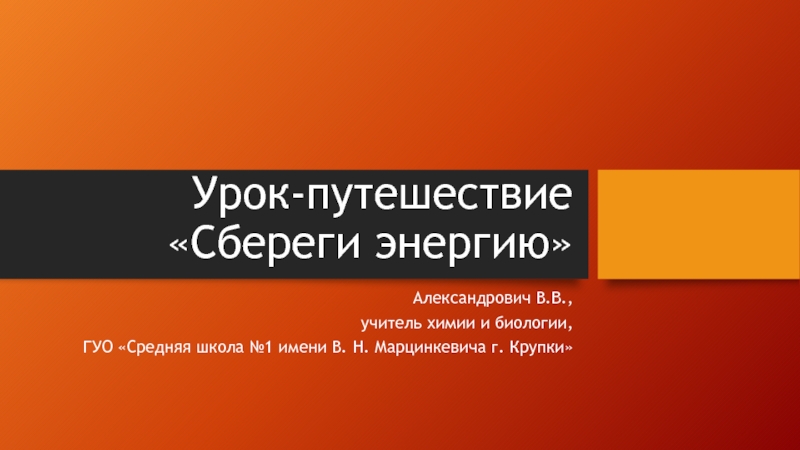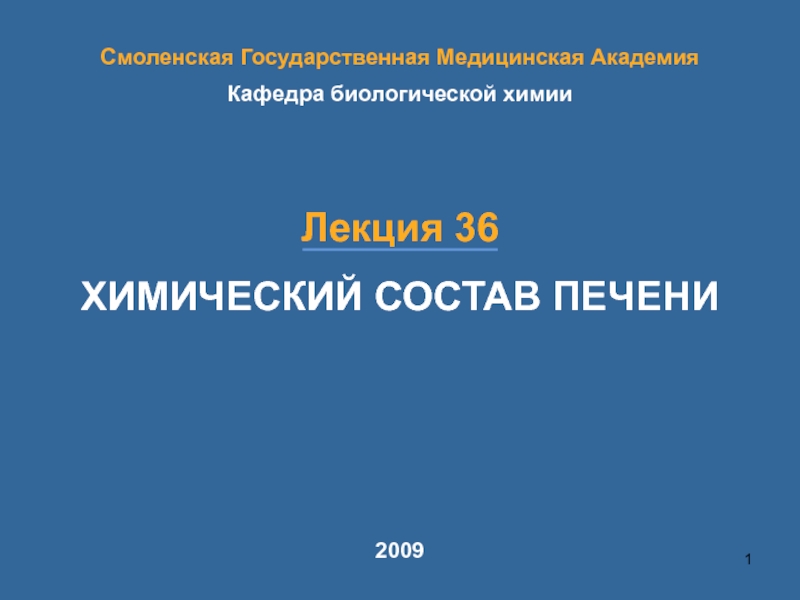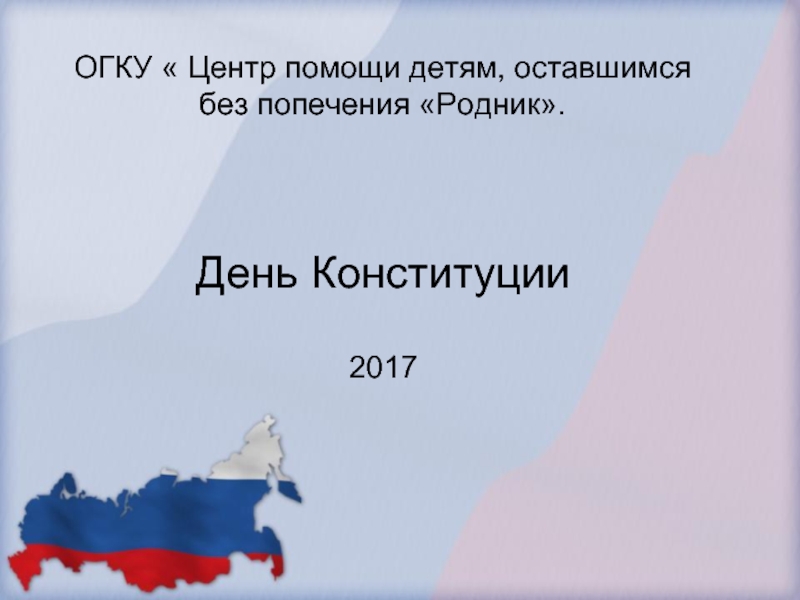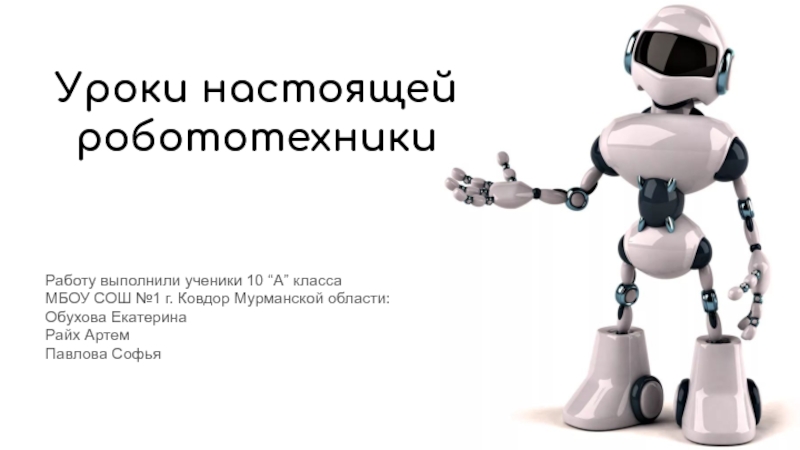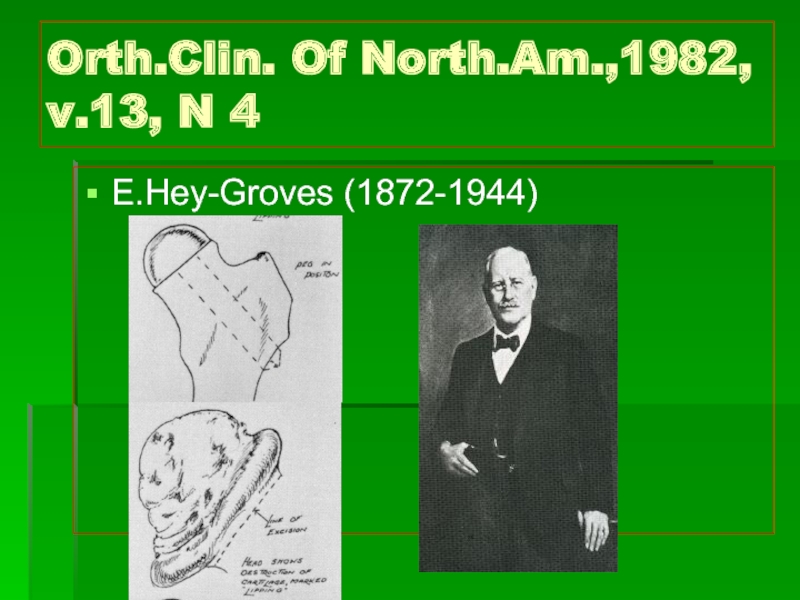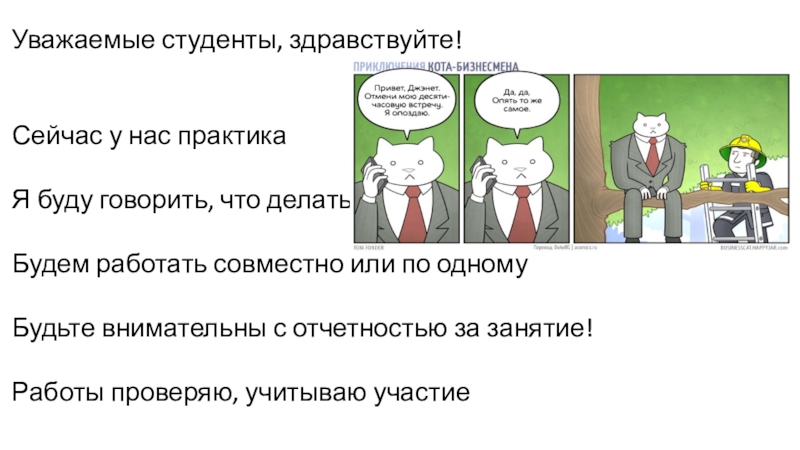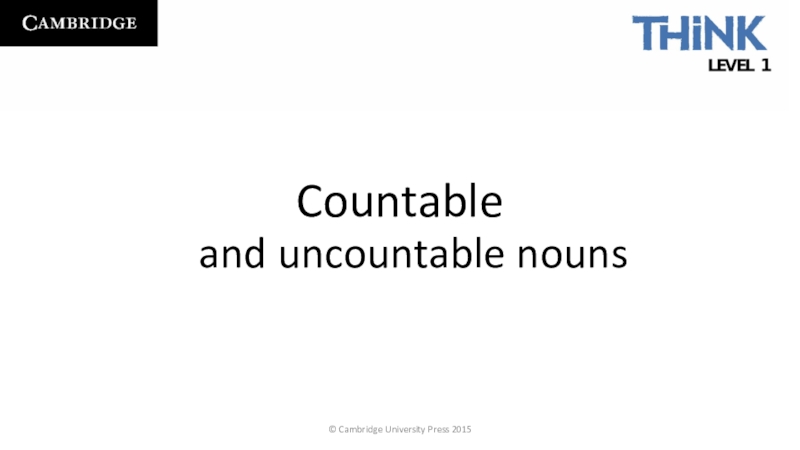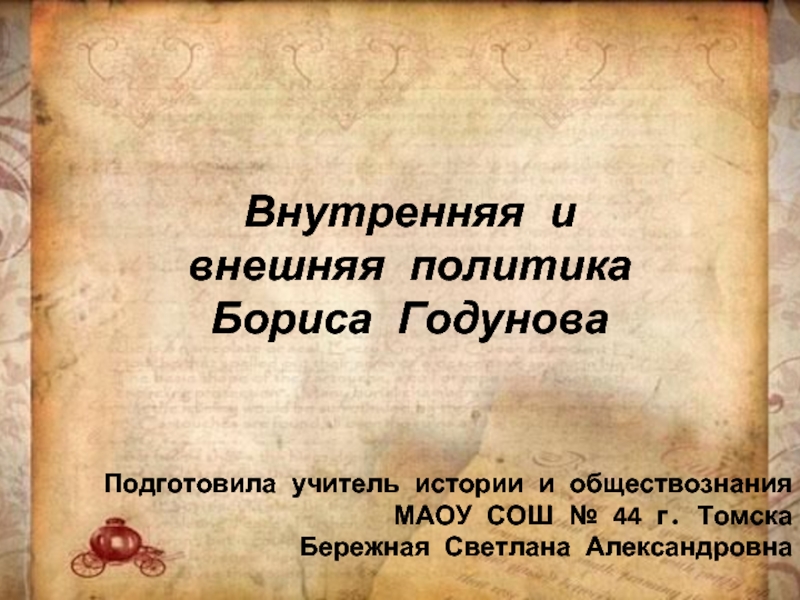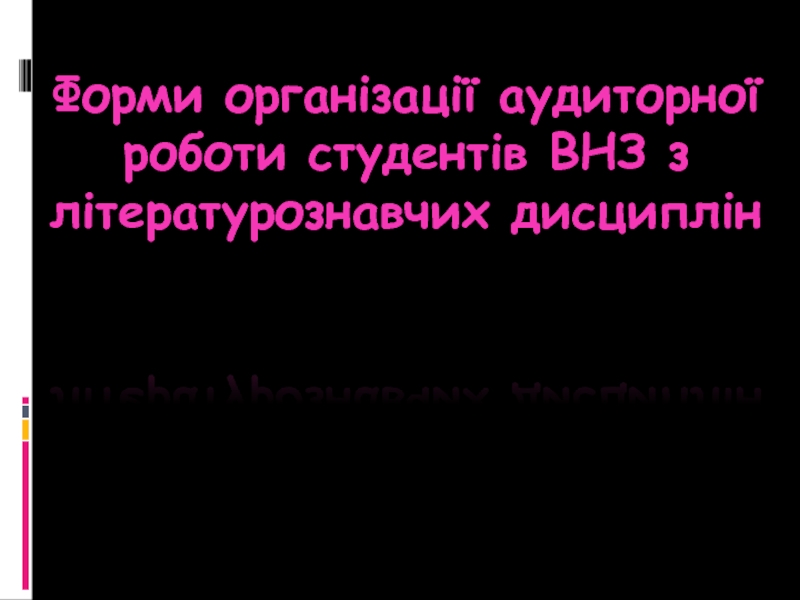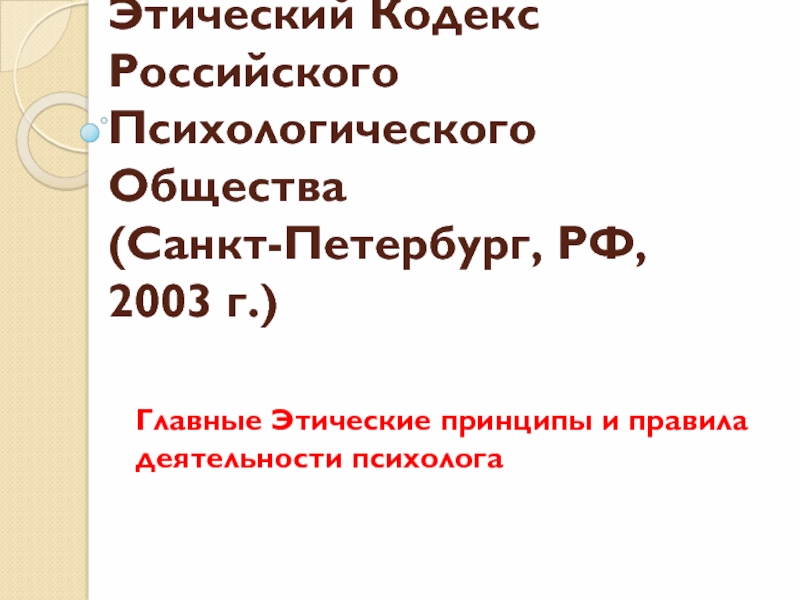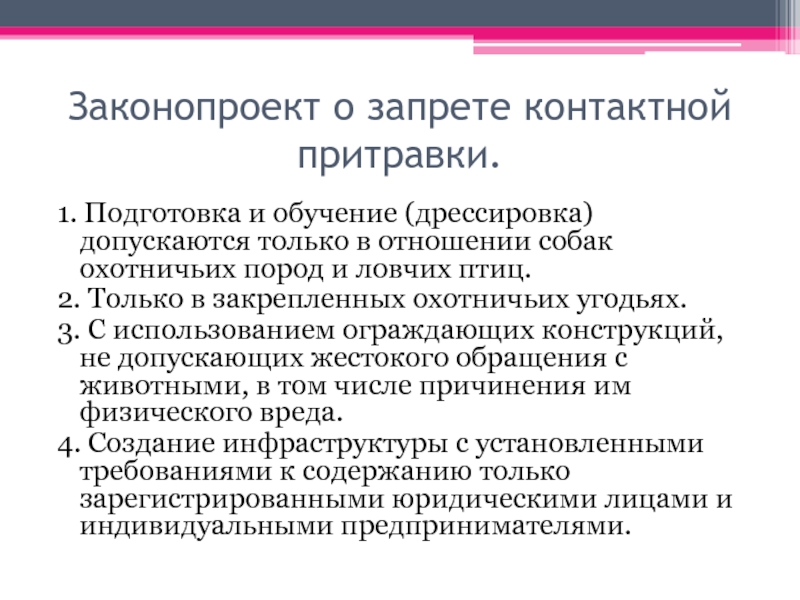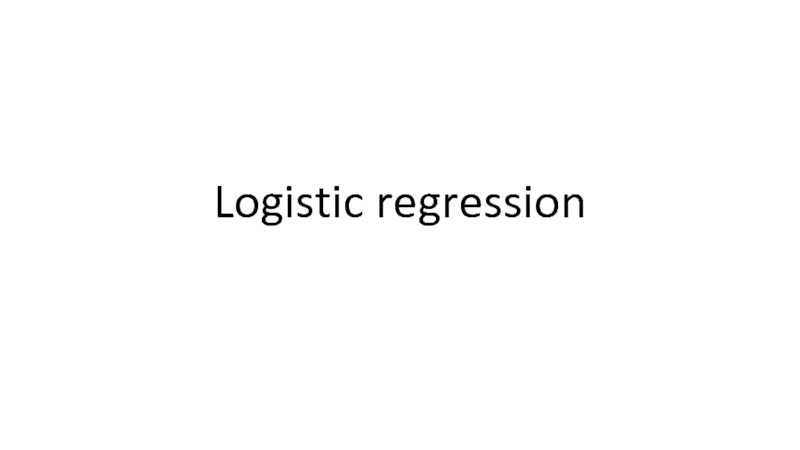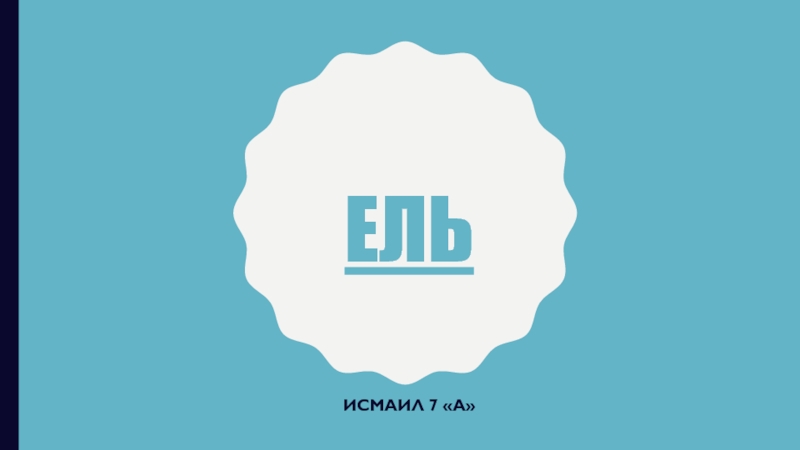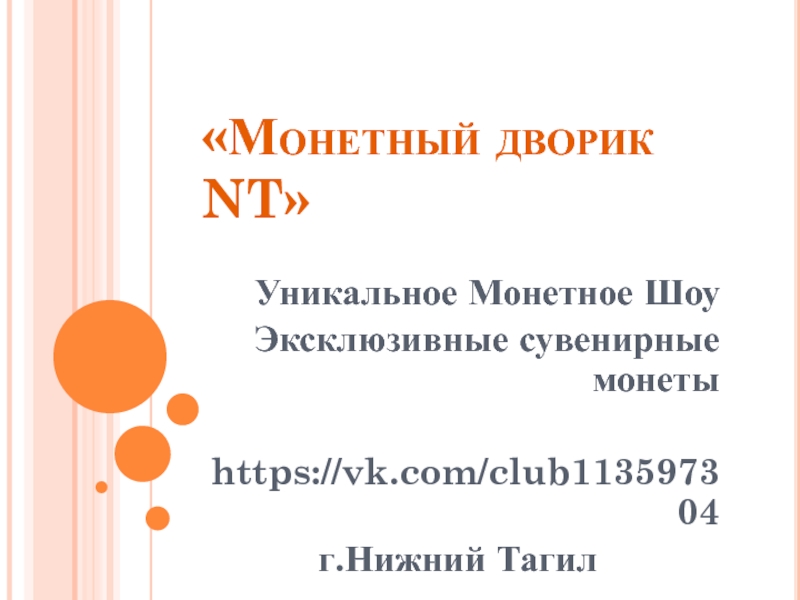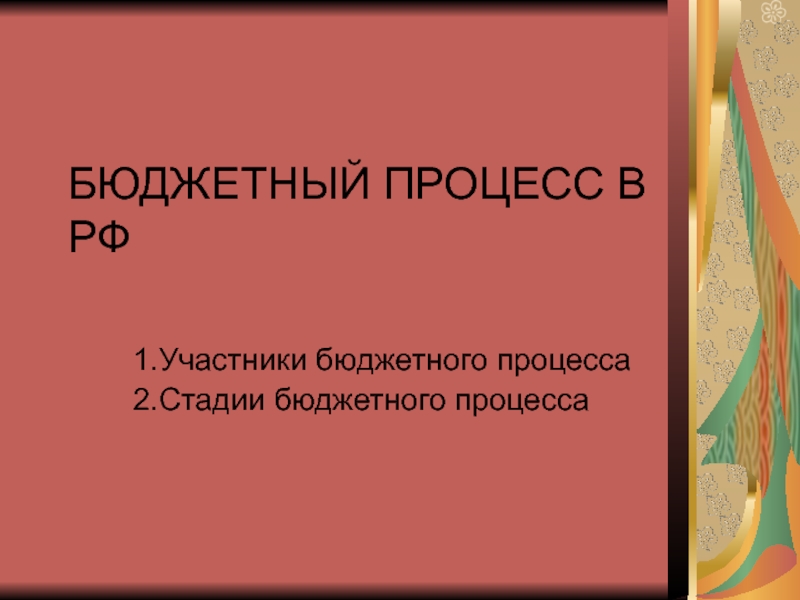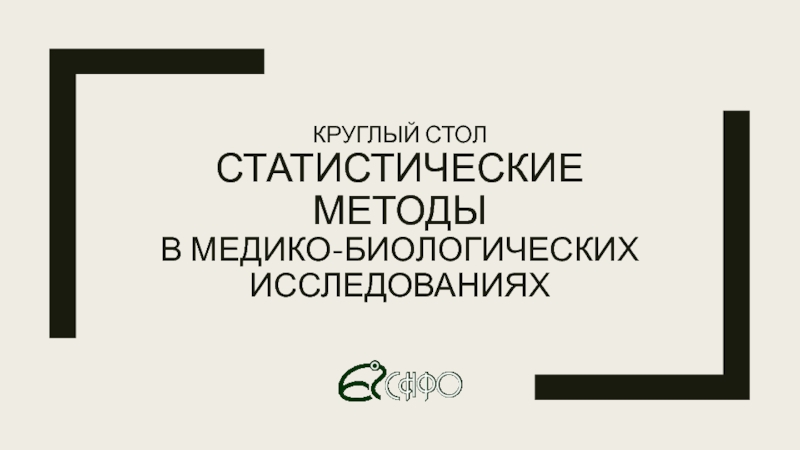Слайд 1The Phoneme
Definition, Aspects and Functions
Слайд 2Phonology
Phonology is a branch of Phonetics which investigates sounds of
speech, as units which serve people for communicative purposes.
In real
speech we pronounce a great variety of sounds, some of the sounds help to differentiate words, because they are different phonologically. Their interchange changes the meaning of the words and interferes with communication.
E.g. /pɪl/, /bɪl/.
Unlike phonetics which studies sounds as articulatory and acoustic units.
Слайд 3At the same time there are sounds which partially differ
in articulation and acoustic value, but they don't differ phonologically.
They can't differentiate words and their substitution does not interfere with communication it only causes a foreign accent,
e.g. pill – aspiration, spill – less aspiration, slipper – p – partially voiced.
Слайд 4The first type of sounds which is phonologically important is
phonemes.
Every language has a limited number of sound types or
phonemes, they are shared by all the native speakers of the language and they are linguistically important because they distinguish words.
In English there are 20 vowel phonemes and 24 consonant phonemes (6 vowels, 35 consonants – Russian).
Слайд 5In actual speech sounds pronounced by speakers are variants of
the phonemes existing in the language. These really pronounced variants
are called allophones /vaɪn/ - /waɪn/
Allophones are sounds that cannot distinguish words in a definite language, they occur only in certain positions or in combination with certain sounds, they are realizations of one and the same phoneme.
/l/ - [kɔ:l] – dark variant- [laɪt] – light variant
Слайд 6There are several conceptions of the phoneme among Russian and
foreign linguists and none of them is satisfactory from all
points of view.
The difficulty of giving such a definition lies in the fact that the Phoneme has several aspects and functions.
That's why it's impossible to give a formal definition in a single sentence that would reflect all the aspects and functions.
Professor Vasilyev suggests a rather short working definition: the Phoneme is the smallest further indivisible into small segments language unit that exists in the speech of all the members of a given language community as such speech sounds, which are capable of distinguishing one word from another word of the same language or one grammatical form of a word from another grammatical form of the same word.
Слайд 7The Phoneme is a dialectical unity of 3 aspects reflected
in the above mentioned definition.
The 1st aspect: the Phoneme is
material, real and objective;
2nd aspect: the Phoneme is abstractional and generalized;
3rd aspect: the Phoneme is also a functional unit.
The 3 aspects are interconnected and they determine one another.
Слайд 81st aspect. Material, real and objective.
A phoneme has a material
aspect in the sense that it is represented by concrete
material sounds. And that is its allophones. In other words the phoneme exists in speech in the material form of speech sounds. What is material is at the same time real. The phoneme is a linguistic reality, because it exists in actual speech. The phoneme is objective, because it exists independently of the will of individuals.
Слайд 92nd aspect. Abstractional and generalized.
The phoneme is abstracted from its
allophones, but at the same time its characterized by the
features common to all of them. E.g. /b/ - occlusive, bilabial, lenis, some allophones can be partially devoiced, can lose bilabial character, but most important characteristics remain.
Слайд 103rd aspect. Functional unit.
This aspect is reflected in the definition
by Vasilyev as the smallest language unit, capable of differenciating
words and their grammatical forms.
The 3 linguistic functions of the phoneme are:
1) the distinctive function;
2) the constitutive function;
3) the recognitive function (identificatory).
Слайд 11Distinctive function consists in the differenciation of the language units
higher than the phoneme itself. The distinctive function of the
phoneme may be subdivided into the following:
1) morpheme-distinctive (teach – teacher),
2) word or form distinctive (/pen/ - /ten/, ask - asks);
3) sentence-distinctive (It was cold. It was gold. It was bold).
The distinctive function is the principle function of the phoneme.
Constitutive function. Though the phoneme in isolation has no meaning, it is linguistically important because in its material form it constitutes words, morphemes which are meaningful.
Recognitive (identificatory) function. The recognitive function consists in making words with their grammatical forms and then whole sentences easily recognizable as the result of the use of the right phoneme in the right place.
Слайд 12The Phoneme Theory
The phoneme theory came into being in Russia.
It was founded by professor I.A. Baudoin de Courtenay (1845
– 1929), who was the founder of the Kazan linguistic school.
The fundamental principles of the phoneme theory were worked out by him during the 1870s.
According to his theory a speech sound is a sound of a definite acoustic quality, produced by the organs of speech. Any given speech sound is incapable of variation. A Phoneme is defined by him as a group of related sounds of a given language, which are so used in connected speech, that no one of them ever occurs in positions, which any other can occupy. Speech sounds which belong to the same phoneme cannot distinguish one word from another, but phonemes distinguish one word from another in the same language.
Слайд 13Baudoin de Courtenay's point of view was later developed by
his disciple Lev Scherba (1880 – 1944).
He separated phonetics
from phonology and stated that sounds are not only articulatory and acoustic units, but they also possess functional qualities.
In every language all these sounds are united in a comparatively small number of sound types. This sound types are capable of distinguishing meanings and forms of words. They serve the purpose of social intercourse. These sound types are called phonemes.
And the actual speech sounds that we pronounce and the individual representing the universal are called phonemic variant or allophones. Scherba's conception is a truly materialistic theory of the phoneme. He was the first to define the phoneme as a real independent distinctive unit, which manifests itself in the form of its allophones.
Слайд 14There are some other views on the nature of the
phoneme. From physical point of view the phoneme is a
family of related sounds in which various members of the family must show articulatory similarity to one another and at the same time no member of the family may occur in the same phonetic context.
This approach overestimates the material aspect of the phoneme since it views the phoneme as a group of articulatory similar sounds without any regard to its functional and abstract aspects.
The physical point of view was put forward by Daniel Johnes, he was the head of London school of phonology. A similar approach is expressed by the French linguist Ferdinant de Saussure. He viewed the phoneme as a sum of acoustic impressions and articulatory movements.
Слайд 15The opposite approach is reflected in the so-called functional view.
It regards the phoneme as the minimal sound unit by
which meanings may be differenciated without much regard to actually pronounced speech sounds. According to this conception the phoneme is not a family of sounds since in every sound not all the articulatory features are involved in the differenciation of meanings. Only the features helping differenciate meanings are called distinctive and they make the phoneme corresponding to them. That's why the approach excludes non-distinctive features from the phoneme.
The approach was first expressed by Nikolay Trubetskoy, the head of the Prague linguistic school. He defines phoneme as a unity of phonologically relevant features. He wrote that when the phoneme is neutralized it becomes an archiphoneme, which is an abstraction combining the distinctive features common to two phonemes (лук — луг, k and g are one archiphoneme). According to his view-point both 'k' and 'g' in the Russian words 'luk' and 'lug' represent the archiphoneme 'k', which is neither voiced, nor voiceless.
A similar view is expressed by American phoneticians, who define the phoneme as a bunch of distinctive features and as an abstractional fiction.
